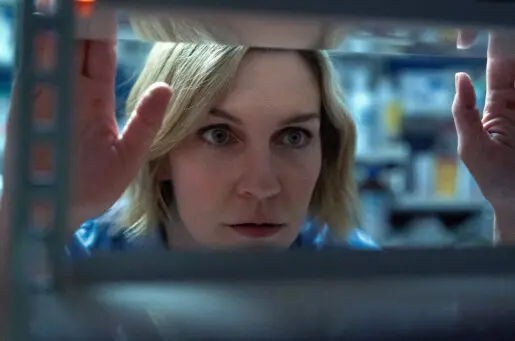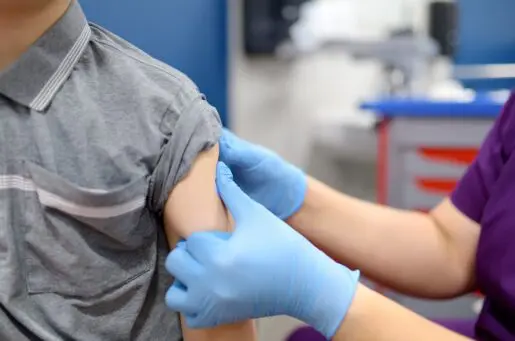Bioethics Forum Essay
Preventing Homosexuality (and Uppity Women) in the Womb?
Two weeks ago, Time magazine reported on our ongoing efforts to protect the rights of pregnant women offered dexamethasone, a risky Class C steroid aimed at female fetuses that may have a form of congenital adrenal hyperplasia (CAH). It appears many women and children exposed to dexamethasone through this off-label use are not being enrolled in controlled clinical trials with IRB oversight, in spite of a persistent consensus among experts that this is the only way this treatment should be happening.
We have learned that, this August, the Journal of Clinical Endocrinology & Metabolism will publish an expert consensus again stating this use of prenatal dexamethasone should onlyhappen via IRB-approved clinical trials through research centers large enough to obtain meaningful data. An announcement of the consensus came at the Endocrine Society’s meeting in San Diego last week (and an earlier version is available here).
This consensus has been endorsed by the American Academy of Pediatrics, the Lawson Wilkins Pediatric Endocrine Society, the European Society for Paediatric Endocrinology, the European Society of Endocrinology, the Society of Pediatric Urology, the Androgen Excess and PCOS Society, and the CARES Foundation. It was reached after review of the existing literature and consultation with researchers indicated significant cause for concern, including the fact that most of the children treated prenatally have been absent from follow-up studies.
The majority of researchers and clinicians interested in the use of prenatal “dex” focus on preventing development of ambiguous genitalia in girls with CAH. CAH results in an excess of androgens prenatally, and this can lead to a “masculinizing” of a female fetus’s genitals. One group of researchers, however, seems to be suggesting that prenatal dex also might prevent affected girls from turning out to be homosexual or bisexual.
Pediatric endocrinologist Maria New, of Mount Sinai School of Medicine and Florida International University, and her long-time collaborator, psychologist Heino F. L. Meyer-Bahlburg, of Columbia University, have been tracing evidence for the influence of prenatal androgens in sexual orientation. In a paper entitled “Sexual Orientation in Women with Classical or Non-Classical Congenital Adrenal Hyperplasia as a Function of Degree of Prenatal Androgen Excess” published in 2008 in Archives of Sexual Behavior, Meyer-Bahlburg and New (with two others) gather evidence of “a dose-response relationship of androgens with sexual orientation” through a study of women with various forms of CAH.
They specifically point to reasons to believe that it is prenatal androgens that have an impact on the development of sexual orientation. The authors write, “Most women were heterosexual, but the rates of bisexual and homosexual orientation were increased above controls . . . and correlated with the degree of prenatal androgenization.”
They go on to suggest that the work might offer some insight into the influence of prenatal hormones on the development of sexual orientation in general. “That this may apply also to sexual orientation in at least a subgroup of women is suggested by the fact that earlier research has repeatedly shown that about one-third of homosexual women have (modestly) increased levels of androgens.” They “conclude that the findings support a sexual-differentiation perspective involving prenatal androgens on the development of sexual orientation.”
And it isn’t just that many women with CAH have a lower interest, compared to other women, in having sex with men. In another paper entitled “What Causes Low Rates of Child-Bearing in Congenital Adrenal Hyperplasia?” Meyer-Bahlburg writes that “CAH women as a group have a lower interest than controls in getting married and performing the traditional child-care/housewife role. As children, they show an unusually low interest in engaging in maternal play with baby dolls, and their interest in caring for infants, the frequency of daydreams or fantasies of pregnancy and motherhood, or the expressed wish of experiencing pregnancy and having children of their own appear to be relatively low in all age groups.”
In the same article, Meyer-Bahlburg suggests that treatments with prenatal dexamethasone might cause these girls’ behavior to be closer to the expectation of heterosexual norms: “Long term follow-up studies of the behavioral outcome will show whether dexamethasone treatment also prevents the effects of prenatal androgens on brain and behavior.”
In a paper published just this year in the Annals of the New York Academy of Sciences, New and her colleague, pediatric endocrinologist Saroj Nimkarn of Weill Cornell Medical College, go further, constructing low interest in babies and men – and even interest in what they consider to be men’s occupations and games – as “abnormal,” and potentially preventable with prenatal dex:
“Gender-related behaviors, namely childhood play, peer association, career and leisure time preferences in adolescence and adulthood, maternalism, aggression, and sexual orientation become masculinized in 46,XX girls and women with 21OHD deficiency [CAH]. These abnormalities have been attributed to the effects of excessive prenatal androgen levels on the sexual differentiation of the brain and later on behavior.” Nimkarn and New continue: “We anticipate that prenatal dexamethasone therapy will reduce the well-documented behavioral masculinization . . .”
It seems more than a little ironic to have New, one of the first women pediatric endocrinologists and a member of the National Academy of Sciences, constructing women who go into “men’s” fields as “abnormal.” And yet it appears that New is suggesting that the “prevention” of “behavioral masculinization” is a benefit of treatment to parents with whom she speaks about prenatal dex. In a 2001 presentation to the CARES Foundation (a videotape of which we have), New seemed to suggest to parents that one of the goals of treatment of girls with CAH is to turn them into wives and mothers. Showing a slide of the ambiguous genitals of a girl with CAH, New told the assembled parents:
“The challenge here is . . . to see what could be done to restore this baby to the normal female appearance which would be compatible with her parents presenting her as a girl, with her eventually becoming somebody’s wife, and having normal sexual development, and becoming a mother. And she has all the machinery for motherhood, and therefore nothing should stop that, if we can repair her surgically and help her psychologically to continue to grow and develop as a girl.”
In the Q&A period, during a discussion of prenatal dex treatments, an audience member asked New, “Isn’t there a benefit to the female babies in terms of reducing the androgen effects on the brain?” New answered, “You know, when the babies who have been treated with dex prenatally get to an age in which they are sexually active, I’ll be able to answer that question.” At that point, she’ll know if they are interested in taking men and making babies.
In a previous Bioethics Forum post, Alice Dreger noted an instance of a prospective father using knowledge of the fraternal birth order effect to try to avoid having a gay son by a surrogate pregnancy. There may be other individualized instances of parents trying to ensure heterosexual children before birth. But the use of prenatal dexamethasone treatments for CAH represents, to our knowledge, the first systematic medical effort attached to a “paradigm” of attempting in utero to reduce rates of homosexuality, bisexuality, and “low maternal interest.”
Researchers working on an interesting project tend to suggest how their work could have broader implications. This is no exception: the 2008 paper by Meyer-Bahlburg et al hints that variation in sexual orientation beyond the population of girls with CAH might also be partly explainable through prenatal androgen exposure. Such reasoning could lead to the pursuit of other “screening” and “treatment” methods for manipulating intrauterine environments.
While everyone has been busy watching geneticists at the frontier of the brave new world, none of us seem to have noticed what some pediatricians are up to. Perhaps it is because so many people are fascinated by the idea of a “gay gene” that prenatal “lesbian hormones” have slipped past public scrutiny. In any case, we think Nimkarn and New’s “paradigm for prenatal diagnosis and treatment” suggests a reason why activists for gay and lesbian rights should be wary of believing that claims for the innateness of homosexuality will lead to liberation. Evidence that homosexual orientation is inborn could, instead, very well lead to new means of pathologization and prevention, as it seems to be in the case we’ve been tracking.
Needless to say, we do not think it reasonable or just to use medicine to try to prevent homosexual and bisexual orientations. Nor do we think it reasonable to use medicine to prevent uppity women, like the sort who might raise just these kinds of alarms. Consider that our declaration of our conflict of interest.
Alice Dreger is a professor of clinical medical humanities and bioethics at Northwestern University’s Feinberg School of Medicine. Ellen K. Feder is an associate professor and acting chair of American University’s Department of Philosophy and Religion. Anne Tamar-Mattis, an attorney, is the executive director of Advocates for Informed Choice, which employs legal advocacy to support the rights of children with intersex conditions or disorders of sex development.













All of the lesbian women I know personally have been conspicuously MORE interested in motherhood than the heterosexual women I know best.
Also, the most maternal woman I ever knew (mother of nine, and always said she wished she’d had more), though very aggressively heterosexual was conspicuously androgenized in her body. She also pursued a series of stereotypically masculine jobs all through her life. I’m aware that “anecdote” is not the singular of “data”, but my own experience runs strongly to the contrary of the notions underlying this notion of passing out hormones to suppress uppitiness in one’s daughters.
There definitely needs to be more research. Prenatal testing can be helpful in preventing other conditions. I certainly think the parents should someday know the results of such testing and have options for treatment if they so choose. What a female chooses for a career or lacks in the desire to have children is not as much of an issue as their actual physical sexual orientation at birth. I know several hetoralsexual woman who aren’t married and not overly interested in having children and have pursued a male oriented career and aren’t in a state of uncertainty trying to fit in and searching for their identity.